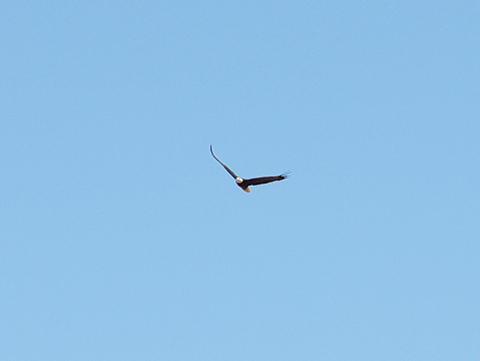VIEWS: 3185
April 15, 2021SRPMIC Bald Eagles Thrive as U.S. Populations Soar
According to a new report by the U.S. Fish and Wildlife Service (USFWS), American bald eagle populations have quadrupled since 2009.
On March 24, the U.S. Department of the Interior put out a press release with the announcement. In the 1960s, bald eagles were almost extinct, “reaching an all-time low of 417 known nesting pairs in 1963 in the lower 48 states.” According to scientists from the USFWS Migratory Bird Program, the bald eagle population has now climbed to an estimated 316,700 birds in the lower 48 states, with more than 71,400 nesting pairs.
“Today’s announcement is truly a historic conservation success story. Announcements like ours today give me hope. I believe that we have the opportunity of a lifetime to protect our environment and our way of life for generations to come. But we will only accomplish great things if we work together,” said U.S. Secretary of the Interior Deb Haaland.
This is good news for the species, but despite this increase in numbers across the U.S., Arizona, and other southwest states, are still working to get the bald eagle population to a more comfortable status. The Salt River-Pima Maricopa Indian Community works closely with the Arizona Game and Fish Department to ensure long-term bald eagle conservation on Tribal land.
SRPMIC has three bald eagle nests that are active, which means that the eagles either have laid eggs or are in the process of laying eggs.
One of the nests, the Riverside Nest, is called an urban nest because it is not in a riparian area and is located among residences and commercial development. The other two nests are in a preserved riparian area within the Community.
According to SRPMIC CDD-EPNR Senior Environmental Engineer Gina Leverette-Mason, this marks the first year the Community is not going to band the bald eagle chicks at the Riverside Nest, due to COVID-19 pandemic safety protocols.
When banding is done, “Instead of climbing the tree, the Salt River Fire Department is kind enough to bring out their ladder trucks and they are allowed to go up in the bucket and pull the chicks down from the nest very carefully,” said Leverette-Mason. “They’ll put a little hood on the chicks and that will calm them. If you put something over their face, they will stay calm instead of trying to jump around or fight. Once the chicks are on the ground, we can then collect data that is needed.”
The birds’ weight and the size of their talons and beak will then be measured, and their size will determine if they are female or male. That’s because the females are always larger than the males. They will then put a banding tag on the chicks so they can be identified no matter where they go, and their place and year of origin are recorded.
The bald eagles in the Sonoran Desert area are significantly smaller than bald eagles found in other regions, like Alaska. Because of their size, there was talk a few years ago about classifying the desert eagles as a subspecies, the “desert nesting bald eagle,” but the classification wasn’t approved. It has been argued that the size difference is explained by Bergmann’s rule, a zoological principle that correlates external temperature and the ratio of body surface to weight in warm-blooded animals. Birds and mammals are observed to have larger bodies in colder climates as opposed to warmer climates.







